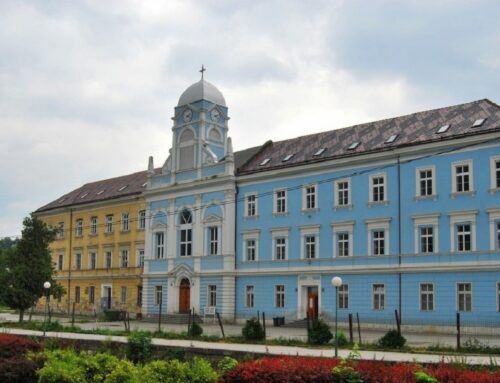The war in Ukraine is an unprecedented cataclysm for Europe. It considerably influenced the further development of Brussels relations with its 6 Eastern partners, returned Europe to geopolitical competition. The war considerably influenced the positions of both major regional players and participants of the Eastern Partnership initiative. Destabilization of the region, security risks require to reassess and reshape the EU’ cooperation with the region.
The EaP is inclined to reform in the direction of an even greater individual orientation, and, consequently, of the increasing importance of the bilateral track. The adoption of new resilience tools aimed at supporting its partners and preserving its positions seems to be as well indispensable. At the same time, the multilateral component of the initiative retains its importance in terms of partners coordination and orientation in the future.
In this article, the current challenges of the EaP, the links between the conflict and initiative adaptation to it are addressed.
Milestones of the EaP evolution
Initially, the EaP was launched as a partnership program for EU’ partners from Eastern Europe and the South Caucasus with the goal of facilitating the process of their political and subsequent economic integration. Brussels used a universal approach in establishing a new regional cooperation network, or a one-size-fits-all strategy towards its partners. [3], [14]
Amid regional crises and conflicts, the EU revised the European Neighborhood Policy in 2015 to create a more resilient, differentiated approach towards the framework of cooperation with its neighbors, including the EaP countries. The intensity and depth of the partnership were declared to be determined by both the EU and its sovereign partners. [11] Such a revision of the cooperation framework was confirmed in the Joint Declaration of the Riga EaP Summit in 2015. More flexibility and coherence in cooperation with partners, special focus on security sector and sustainability were stressed. [13] At that point Brussels acknowledged a greater differentiation between its Eastern partners, recognized the non-alliance of some participants to EU rules and aspirations, and put into priority the question of regional stabilization, peace and stability. [13]
In 2020 Joint Communication “Reinforcing Resilience – an Eastern Partnership that delivers for all”, the strategy of achieving five actualized objectives for next years was characterized by the joint tackling of common challenges, being more inclusive and resistant, carrying on reforming by following the EU’ incentive-based approach. [12] As tensions in the region were rising, the EaP Summit Joint Declaration of December, 2021, showed the continuing adherence of the EU and its partners to further development of cooperation, according to previously established ‘modus operandi‘, and international law. That included more tailored common shaping of the partnership framework with an emphasis on respecting partners’ sovereignty and needs. Brussels’ conditionality and a ‘more-for-more’ and ‘less-for-less’ approach towards its regional partners was recognized once again.
The war impact on the EaP
The transformation of the region into the geopolitical battlefield incredibly influenced the further action of the EU towards its Eastern partners. Russia is trying to undermine such a partnership and considers it as a threat to national-security and its ‘sphere of influence’. It should be noted that the EaP wasn’t supposed to answer such regional challenges, like the full-scale war in Ukraine. Indeed, one of its main goals was establishing and maintenance of peace, security and stability, but the current agenda is out of any legally acceptable, reasonable vision of regional structure. Such challenges, as the ongoing interference in the internal affairs of sovereign states, destabilization of the region, violation of territorial integrity of EaP partners required decisive steps from Brussels, its adaptation to the changed regional agenda. [18]
A long-standing question of its positioning on the international arena is now met by the EU creating a ‘geopolitical Europe’, that preserves the priority of the rule of law and fundamental rights principles in its foreign affairs [20]. Thus, the Union has its strategic view on the region with orientation on supporting its partners with resilience, independence, security building, by using the tools of both soft power and hard power.
Thus, in 2022 EU Strategic Compass plans of improving cooperation and assistance in the field of resilience, security and defense with its Eastern partners are highlighted. Partnership connections with Ukraine, Moldova and Georgia are declared to be strengthened, specifically as for the questions of cybersecurity, hybrid threats and disinformation. The commitment of supporting Ukraine is declared. [1]
There is a need to stress increased EU activity to respond to Russian aggression and to support its EaP partners. Among all, support of Ukraine was and remains being paramount. One of the decisive steps on the part of Brussels is provision of more than 3.1 billion euros through the European Peace Facility, as well as launching in November 2022 of the EU Military Assistance Mission in Ukraine with the main goal of military training support organization. [19] Besides, the EU Partnership Mission was established in the Republic of Moldova in May 2023 to support the state’s security and resilience in the face of RU’ hybrid attacks, disinformation and energy blackmail. [2], [9] The full-scale war changed the perception of the ‘Associated Trio’ of Moldova, Ukraine and Georgia and their willingness to accede the European Union. The work done by the above-mentioned countries and the European Commission is highly remarkable. If previously such aspirations were perceived as non-realistic, in June 2023 Moldova and Ukraine were granted candidate status. In its turn, Georgia was recommended to receive the same feedback from the EU, once it fulfills indicated by the European Commission 12 priority reforms. [8]
In the current situation, the EaP is a program with a tremendously differentiated participants: from people of Belarus, bypassing the government to participate in it, to the trio of candidate-countries. However, some experts do not consider candidate status granting as a booster of the EaP attenuation. [10] There are also partners that have different priorities and interests in relations with the EU and are in direct conflict with each other, as it’s the case of Azerbaijan and Armenia. A partnership with an essential energy exporter Azerbaijan and highly divided Armenia, that has close ties with Russia, seems to be difficult to develop apart from the current respective models. [5] The difference between EU’ partners increased, what is posing questions about further development of the initiative. Consequently, many scholars promote the idea of creating a new initiative to adjust cooperation strategy to nowadays needs and requirements. [5], [7], [15]
Unless there are some new initiatives, as the new European Political Community establishment at the end of 2022 [6], preserving both tracks of the EaP is paramount because of an already well-built common multilateral architecture of cooperation and partnership. As for now, the bilateral track of the initiative is more ambitious. It is developing faster, than the multilateral one, due to increased polarization and dissimilarity among Eastern partners. At the same time, the multilateral composition of cooperation within the EaP in energy, connectivity, and digitalization spheres stays relevant. [17] There is a need to stress propositions to create a security dimension of the EaP from some experts, that seem to be topical. [7], [16] However, the ongoing conflict between Yerevan and Baku isn’t contributing to the common process at all, and even is building some barriers on the path of common resilience, security, and connectivity partnership.
It should be highlighted that the future development of the EaP will significantly depend on the course of the war in Ukraine and its results, especially the further influence of Moscow on neighbors and Russian openness for cooperation with them and the EU, its participation in regional international relations sub-system.
Conclusion
At the moment, the security risks of enhancing partnership are particularly high for such partners (excluding Ukraine already fighting for its sovereignty), like Armenia, Georgia and Moldova. However, in the long run, the interest of partners is already defined by the aggressive nature of Russian ‘realpolitik’. That’s why it’s of paramount importance to preserve the current cooperation framework, by adjusting it in the way that won’t put partners in direct threat from Moscow (where applicable) but will build more resilient and strong sovereign actors. Besides, the current activity of the EU in promoting security and sustainability with its partners is remarkable. Unfortunately, the situation doesn’t favor a fast development of the EaP initiative, but fostered its bilateral track with some partners, activated cooperation in the sphere of resilience and common defense, when it was necessary and required.
To conclude, notwithstanding its initial nature, the EaP initiative remains relevant, and the EU is managing to correlate its normative approach with current geopolitical challenges. An even more differentiated strategy is appropriate in the current situation, as for dealing with its Eastern partners with common issues and threats. The war in Ukraine didn’t decrease the EaP relevance but created obstacles and pushed the region it to adapt to the current challenges, that is essential to ensure regional development and prosperity in the future. [4]
References:
1. A Strategic Compass for Security and Defense – For a European Union that protects its citizens, values and interests and contributes to international peace and security. Accessed September 11, 2023. https://data.consilium.europa.eu/doc/document/ST-7371-2022-INIT/en/pdf.
2. About EU Partnership Mission in Moldova. EU Partnership Mission in Moldova. Accessed September 11, 2023. https://www.eeas.europa.eu/eupm-moldova/about-eu-partnership-mission-republic-moldova_en?s=410318.
3. Amanda Paul, Ionela Ciolan. Lessons from the Eastern Partnership: Looking back to move forward. European Policy Center. Accessed September 11, 2023. https://www.epc.eu/en/publications/Lessons-from-the-Eastern-Partnership-Looking-back-to-move-forward~44d130.
4. Ana Furtuna, “The Eastern Partnership policy framework supports Ukraine’s candidate status”, The Brussels Times, accessed September 11, 2023, https://www.brusselstimes.com/225451/we-support-ukraines-eu-candidate-status.
5. Arkady Moshes, Beyond the Eastern Partnership: The time has arrived for a new policy in the East of Europe,. Stockholm Centre for Eastern European Studies, accessed September 11, 2023, https://sceeus.se/en/publications/beyond-the-eastern-partnership-the-time-has-arrived-for-a-new-policy-on-the-east-of-europe/.
6. Dr. Stefan Meister, “A Paradigm Shift: EU-Russia Relations After the War in Ukraine”, accessed September 11, 2023, https://dgap.org/en/research/publications/paradigm-shift-eu-russia-relations-after-war-ukraine.
7. Dr. Stefan Meister, Milan Nič, Iskra Kirova, Dr. Steven Blocmans, “Rethinking the EU’s Eastern Enlargement and Neighborhood Policy”, German Council on Foreign Relations, accessed September 11, 2023, https://dgap.org/en/research/publications/russias-war-ukraine-rethinking-eus-eastern-enlargement-and-neighborhood.
8. European Council conclusions on Ukraine, the membership applications of Ukraine, the Republic of Moldova and Georgia, Western Balkans and external relations, 23 June 2022. European Council. Accessed September 11, 2023. https://www.consilium.europa.eu/en/press/press-releases/2022/06/23/european-council-conclusions-on-ukraine-the-membership-applications-of-ukraine-the-republic-of-moldova-and-georgia-western-balkans-and-external-relations-23-june-2022/.
9. Ionela Golban, În 2022, au avut loc cele mai mari valuri de atacuri cibernetice din istoria Republicii Moldova, Radio Moldova, accessed September 11, 2023, https://radiomoldova.md/p/3956/in-2022-au-avut-loc-cele-mai-mari-valuri-de-atacuri-cibernetice-din-istoria-republicii-moldova.
10. J, Crombois, J. F. (2023). The Ukraine war and the future of the Eastern Partnership. European View, 22(1), 103–110. Accessed September 11, 2023. https://doi.org/10.1177/17816858231158238.
11. Joint Communication to the European Parliament, the Council, the European Economic and Social Committee and the Committee of the Regions review of the European Neighborhood policy. Accessed September 11, 2023. https://eeas.europa.eu/archives/docs/enp/documents/2015/151118_joint-communication_review-of-the-enp_en.pdf.
12. Joint Communication to the European Parliament, the European Council, the Council, the European Economic and Social Committee and the Committee of the Regions. Eastern partnership policy beyond 2020 p.1. Accessed September 11, 2023. https://www.eeas.europa.eu/sites/default/files/1_en_act_part1_v6.pdf
13. Joint Declaration of the Eastern Partnership Summit (Riga, 21-22 May 2015). Accessed September 11, 2023. https://www.consilium.europa.eu/media/21526/riga-declaration-220515-final.pdf.
14. Joint Declaration of the Prague Eastern Partnership Summit Prague. 7 May 2009. Accessed September 11, 2023, https://www.consilium.europa.eu/media/31797/2009_eap_declaration.pdf.
15. Kristi Raik, “Time to downgrade the Eastern Partnership and refocus on enlargement”, Stockholm Centre for Eastern European Studies, accessed September 11, 2023, https://sceeus.se/en/publications/time-to-downgrade-the-eastern-partnership-and-refocus-on-enlargement/.
16. Michal Baranowski, Mikołaj Bronert, Maximilian Kaminski, Elene Kintsurashvili, “How Sweden can use its EU Presidency to build the civilian security dimension of the Eastern Partnership”, The German Marshall Fund of the United States, accessed September 11, 2023, https://www.gmfus.org/news/how-sweden-can-use-its-eu-presidency-build-civilian-security-dimension-eastern-partnership.
17. Pavel Slunkin, Gabrielė Valodskaitė, “Coming of age: How young diplomats see the future of the EU’s Eastern Partnership initiative”, European Council on Foreign Relations, accessed September 11, 2023, https://ecfr.eu/article/coming-of-age-how-young-diplomats-see-the-future-of-the-eus-eastern-partnership-initiative/.
18. Pierre Mirel, “The Eastern Partnership under the test of the war in Ukraine”, accessed September 11, 2023, https://www.robert-schuman.eu/en/european-issues/0624-the-eastern-partnership-under-the-test-of-war-in-ukraine.
19. Ukraine: EU launches Military Assistance Mission. European Council. Accessed September 11, 2023. https://www.consilium.europa.eu/en/press/press-releases/2022/11/15/ukraine-eu-launches-military-assistance-mission/.
20. 2023 State of the Union Address by the President von der Leyen. European Commission. Accessed September 11, 2023. https://ec.europa.eu/commission/presscorner/detail/en/speech_23_4426.
Picture: Image by Freepik





